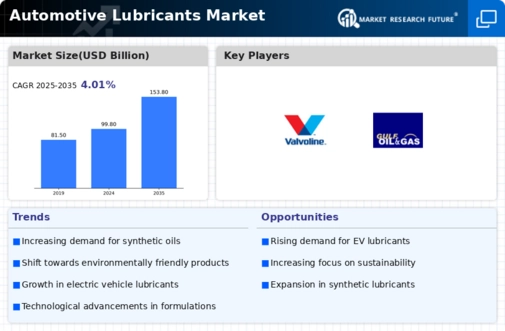Automotive Lubricants Market Summary
As per MRFR analysis, the Automotive Lubricants Market Size was estimated at 99.78 USD Billion in 2024. The Automotive Lubricants industry is projected to grow from 103.78 USD Billion in 2025 to 153.8 USD Billion by 2035, exhibiting a compound annual growth rate (CAGR) of 4.01 during the forecast period 2025 - 2035.
Key Market Trends & Highlights
The Automotive Lubricants Market is experiencing a transformative shift towards sustainability and advanced technologies.
- North America remains the largest market for automotive lubricants, driven by robust vehicle production and technological advancements.
- The Asia-Pacific region is the fastest-growing market, reflecting increasing demand for high-performance lubricants amid rising vehicle ownership.
- Mineral oil continues to dominate the market, while fully synthetic oil is emerging as the fastest-growing segment due to its superior performance characteristics.
- Technological advancements in lubricants and the growth of electric and hybrid vehicles are key drivers propelling market expansion.
Market Size & Forecast
| 2024 Market Size | 99.78 (USD Billion) |
| 2035 Market Size | 153.8 (USD Billion) |
| CAGR (2025 - 2035) | 4.01% |
Major Players
ExxonMobil (US), Shell (GB), BP (GB), Chevron (US), TotalEnergies (FR), Fuchs Petrolub (DE), Valvoline (US), Castrol (GB), Liqui Moly (DE), Amsoil (US)


















Leave a Comment